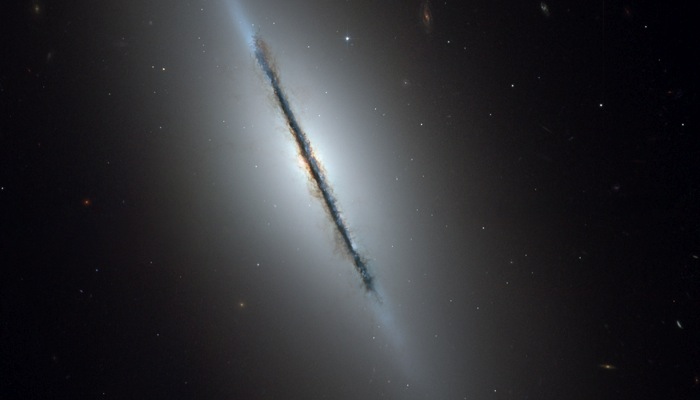
My life in perspective...
Curriculum Vitae
Education
American International College, Springfield, Mass. B. A. Biology with Honor (1986)
Iowa State University, Ames, Iowa. Ph.D. Physical Chemistry. Advisor: Mark S. Gordon, Thesis: “Theoretical studies of possible high energy density materials” (1995)
Post-doctoral training
The Johns Hopkins University, Baltimore, Maryland. Advisor: David R. Yarkony(1995-1998)
Employment
Long Island University, Brooklyn, New York, Assistant Professor (1998-2004)
University of California, Irvine, California, Summer visiting scientist (1999 and 2000)
Long Island University, Brooklyn, New York, Associate Professor (2004-2012)
Osaka Prefecture University, Sakai, Osaka, Japan, Visiting Associate Professor (2008)
Long Island University, Brooklyn, New York, Professor (2012-)
Grants and Award
Research Excellence Award, Dept. of Chem., Iowa State University, 1995.
Sony Corporation, Tokyo, Japan “Modeling of molecular diode”, $10,000,
2006.
LIU Intramural Research Grant, $2,000, 2007
Graduate students supervised
William C. Howard, M.S. Chemistry,
“Harmonic and anharmonic molecular vibrations of simple molecules: Prelude to molecular vibrations in large biological molecules” (2001).
Sean Nedd, M.S. Chemistry, “Implementation of G3(MP2) method and drug transporting lipids” (Sept. 18, 2007).
Natasha Green, M.S. Chemistry, “Electronic motion in possible molecular diode” (2010 expected).
Publications
Review articles:
1. "Nanoelectronics with Single Molecules", Karl Sohlberg and Nikita Matsunaga, in Encyclopedia of Nanoscience and Nanotechnology, H. S. Nalwa Ed., 6 (2004) 665-682.
2. "Modeling of Spin-Forbidden Reactions", Nikita Matsunaga and Shiro
Koseki, in Reviews in Computational Chemistry, K. B. Lipkowitz, R. Larter,
and T. R. Cundari, Eds., 20 (2004) 101-152.
3. "Determination of Enthalpies ('Heats') of Formation", Donald W.
Rogers, Andreas A. Zavitsas, and Nikita Matsunaga in WIREs Computational Molecular Science, Advanced Review,
Wiley and Sons, July, 2012
Articles:
1. "On the Helium Pair Potential", J. A. Montgomery Jr., G. A. Petersson and N. Matsunaga, Chemical Physics Letters, 155 (1989) 413-418.
2. "A Comparative Study of the Bonding in Heteroatom Analogues of Benzene", Nikita Matsunaga, Thomas R. Cundari, Michael W. Schmidt and Mark S. Gordon, the special issue of Theoretica Chemica Acta dedicated to Klaus Ruedenberg, Theoretica Chemica Acta, 83 (1992) 57-68
3. "General Atomic and Molecular Electronic Structure System", M. W. Schmidt, K. K. Baldridge, J. A. Boatz, S. T. Elbert, M. S. Gordon, J. H. Jensen, S. Koseki, N. Matsunaga, K. A. Nugyen, S. Su, T. L. Windus, M. Dupuis, and J. A. Montgomery, J. Computational Chemistry 14 (1993) 1347-1363
4. "Stabilities and Energetics of Inorganic Benzene Isomers: Prismanes", Nikita Matsunaga and Mark S. Gordon, J. American Chemical Society, 116 (1994) 11407-11419
5. "Applications of Parallel GAMESS", Kim K. Baldridge, Mark S. Gordon, Jan H. Jensen, Nikita Matsunaga, Michael W. Schmidt, Theresa L. Windus, Jerry A. Boatz, and Thomas R. Cundari, ACS Symposium Series No. 592 , Parallel Computing in Chemistry , T. G. Mattson Ed., 1995, p. 29-46.
6. "Main Group Effective Charges for Spin-Orbit Calculations", Shiro Koseki, Mark S. Gordon, Mike W. Schmidt and Nikita Matsunaga, J. Phys. Chem. 99 (1995) 12764-12772.
7. "A Theoretical Study of NH4- and PH4-", Nikita Matsunaga and Mark S. Gordon, J. Phys. Chem. 99 (1995) 12773-12780.
8. "Elimination and Activation of Methane and Larger Hydrocarbons", Thomas R. Cundari, Nikita Matsunaga, and Eddie W. Moody, J. Physical Chemistry 100 (1996) 6475-6483
9. "Effects of Conjugation and Aromaticity on the Strength of the Sulfoxide Bond", William S. Jenks, Nikita Matsunaga and Mark S. Gordon, J. Organic Chemistry 61 (1996) 1275-1283
10. "Relativistic Potential Energy Surfaces of XH2 (X=C, Si, Ge, Sn and Pb) Molecules: Coupling of 1A1 and 3B1 States", Nikita Matsunaga, Shiro Koseki and Mark S. Gordon, J. Chemical Physics 104 (1996) 7988-7996
11. "Structures of Some Substituted Nitrophenols Determined by Ab Initio Computation: On the Origin of Heterocliticity in Anti- Nitrophenol Antibodies", Christian S. Parry, Bernard R. Brooks, Nikita Matsunaga and L. Mario Amzel, J. Molec. Structure (THEOCHEM), 398-399 (1997) 555-563
12. "Energies and Derivative Couplings in the Vicinity of a Conical Intersection. II CH2(23A'', 33A'') and H2S(11A'', 21A''), Unexpected Results in an Ostensibly Standard Case", Nikita Matsunaga and David R. Yarkony, J. Chemical Physics, 107 (1997) 7825-7838
13. "Energies and Derivative Couplings in the Vicinity of a Conical Intersection 3. The 'Most' Diabatic Basis", Nikita Matsunaga and David R. Yarkony, Molecular Physics, 93 (1998) 79-84
14. "Deoxygenation of (silox)3WNO and R3PO by (silox)3M (M = V, Ta) and (silox)3NbL (silox = t Bu3SiO): Consequences of Electronic Effects", Adam S. Veige, Lee M. Slaughter, Peter T. Wolczanski, Nikita Matsunaga, Stephen Decker, and Thomas R. Cundari, Journal of American Chemical Society, 123 (2001) 6419-6420.
15. "The Substituent Effect on Non-linear I/V Characteristics in a Two-Terminal Molecular Electronic Device", Nikita Matsunaga and Karl Sohlberg, Journal of Nanoscience and Nanotechnology, 1 (2001) 275-279.
16. "Degenerate Perturbation Theory Corrections for the Vibrational Self-Consistent Field Approximation: Method and Applications" Nikita Matsunaga, Galina M. Chaban, and R. Benny Gerber, Journal of Chemical Physics, 117 (2002) 3541-3547.
17. "The Effect of Substituents on Molecular Electronic Junctions", Nikita Matsunaga and Karl Sohlberg, Journal of Nanoscience and Nanotechnology, 2 (2002) 659-667.
18. "Pauling's Electronegativity Equation, its Accuracy, Current Usefulness and a New Corollary. Bond Dissociation Energies and the Nature of Chemical Bonding", Nikita Matsunaga, Donald W. Rogers, and Andreas Zavitsas, Journal of Organic Chemistry, 68 (2003) 3158-3172.
19. "The Conjugation Stabilization of 1,3-Butadiyne is Zero", Donald W. Rogers, Nikita Matsunaga, Andreas A. Zavitsas, Frank J. McLafferty, and Joel F. Liebman, Organic Letters, 5 (2003) 2373-2375.
20. "Symmetry and Geometry Considerations of Atom Transfer: Deoxygenation of (silox)3WNO and R3PO (R = Me, Ph, tBu) by (silox)3M (M = V, NbL (L = PMe3, 4-picoline), Ta; silox = tBu3SiO)", Adam S. Veige, Lee M. Slaughter, Emil B. Lobkovsky, Peter T. Wolczanski, Nikita Matsunaga, Stephen A. Decker, and Thomas R. Cundari, Inorganic Chem., 42 (2003) 6204-6224.
21. "Correlating substituent parameter values to electron transport properties of molecules", Natalie Vedova-Brook, Nikita Matsunaga, and Karl Sohlberg, Chem. Phys., 299 (2004) 89-95.
22. "On the potential energy curve of the ground state of the sodium dimer, X1Σg+ Na2. Comparison of spectroscopic potentials and an a priori analytical function.", Nikita Matsunaga and Andreas A. Zavitsas, J. Chem. Phys., 120 (2004) 5624-5630.
23. "On the lack of conjugation stabilization in polyynes (polyacetylenes)", D. W. Rogers, N. Matsunaga, F. J. McLafferty, A. A. Zavitsas AA, J. F. Liebman, J. Org. Phys., 69 (2004) 7143-7147.
24. "G3(MP2) Enthalpies of Hydrogenation, Isomerization, and Formation of Extended Linear Polyacetylenes", D. W. Rogers, A. A. Zavitsas, and N. Matsunaga, J. Phys. Chem. A. 109 (2005) 9169-9173.
25. "Stabilization energies of extensively conjugated propargylic radicals", D. W. Rogers, N. Matsunaga, and A. A. Zavitsas, J. Org. Chem. 71 (2006) 2214-2219.
26. "Generation of oxynitrenes and confirmation of their triplet ground states", Walter A. Wasylenko, Naod Kebede, Brett M. Showalter, Nikita Matsunaga, Alexander P. Miceli, Yonglin Liu, Lev R. Ryzhkov, Christopher M. Hadad, and John P. Toscano, J. Amer. Chem. Soc., 128 (2006) 13142-13150.
27. "Molecular conduction characteristics from the intrinsic molecular properties", Nikita Matsunaga, J. Comput. Theor. Nanosci., 3 (2006) 957-963.
28. "Effect of spacer attachment sites and pH-sensitive headgroup expansion on cationic lipid-mediated gene delivery of three novel myristoyl derivatives", Michael Spelios, Sean Nedd, Nikita Matsunaga, Michalakis Savva, Biophys. Chem., 129 (2007) 137-147.
29. "Remote Substituent Effects on Allylic and Benzylic Bond Dissociation Energies. Effects on Stabilization of Parent Molecules and Radicals" Andreas A. Zavitsas, Donald W. Rogers, and Nikita Matsunaga, J. Org. Chem., 72 (2007) 7091-7101.
30. "Accurate ab initio potential energy curve of F2. II. Fully correlated and relativistically augmented energies.", L. Bytautas, N. Matsunaga, T. Nagata, M. S. Gordon, and K. Ruedenberg, J. Chem. Phys., 127 (2007) 204301, 12 pages.
31. "Accurate ab initio potential energy curve of F2. III. The vibration rotation spectrum.", L. Bytautas, N. Matsunaga, T. Nagata, M. S. Gordon, and K. Ruedenberg, J. Chem. Phys., 127 (2007) 204313, 19 pages.
32. "Enthalpies of Formation of Hydrocarbons by Hydrogen Atom Counting. Theoretical Implications", Andreas A. Zavitsas, Nikita Matsunaga, and Donald W. Rogers, J. Phys. Chem. A, 112 (2008) 5734-5741.
33. “Effects of Molecular Stabilization Energies on Radical Reactions: G3 and G3(MP2) Model Chemistries Applied to Benzylic Systems.”, Donald W. Rogers, Andreas A. Zavitsas, Nikita Matsunaga, J. Phys. Chem. A 113 (2009) 12049-12055.
34. “Halogenated catechols from cycloaddition reactions of neta4-(2-ethoxyvinylketene)iron(0) complexes with 1-haloalkyne", Jimmy Truonga, Vioela Cazea, Ravish K. Akhania, Gayatribahen K. Joshia, Lazaros Kakalisb, Nikita Matsunagaa and Wayne F.K. Schnatter, Tet. Lett. 51 (2010) 921-923.
35. “Accurate ab initio potential energy curve of O2. II. Core-valence correlation, relativistic contributions and vibration-rotation spectrum”, Laimutis Bytautas, Nikita Matsunaga, and Klaus Ruedenberg, J. Chem. Phys., 132 (2010) 074307, 15 pages.
36. “Shortcomings of Basing Radical Stabilization Energies on Bond Dissociation Energies of Alkyl Groups of Hydrogen”, Andreas A. Zavitsas, Donald W. Rogers, and Nikita Matsunaga, J. Org. Chem., 75 (2010) 5697-5700.
37. “Heats of Formation of Organic Compounds by a Simple Calculation”, Andreas A. Zavitsas, Donald W. Rogers, and Nikita Matsunaga, J. Org. Chem., 75 (2010) 6502-6515.
38. “Tetrahydrides of third-row transition elements: Spin-orbit coupling effects on the stability of rhenium tetrahydrides”, Shiro Koseki, Taka-aki Hisashima, Toshio Asada, Azumao Toyota, and Nikita Matsunaga, J. Chem. Phys., 113 (2010) 174112, 9 pages.
39. “The Thermodynamic Conjugation Stabilization of 1,3 Butadiyne is Zero”, Donald W. Rogers, Andreas, A. Zavitsas, and Nikita Matsunaga, J. Chem. Ed., 87 (2010) 1357-1359.
40. “Accurate Potential Energy Curve for B2. Ab Initio Elucidation of the Experimentally Elusive Ground State Rotation-Vibration Spectrum”, Laimutis Bytautas, Nikita Matsunaga, Gustavo E. Scuseria, and Klaus Ruedenberg, J. Phys. Chem. A, 116 (2012) 1717-1729.
